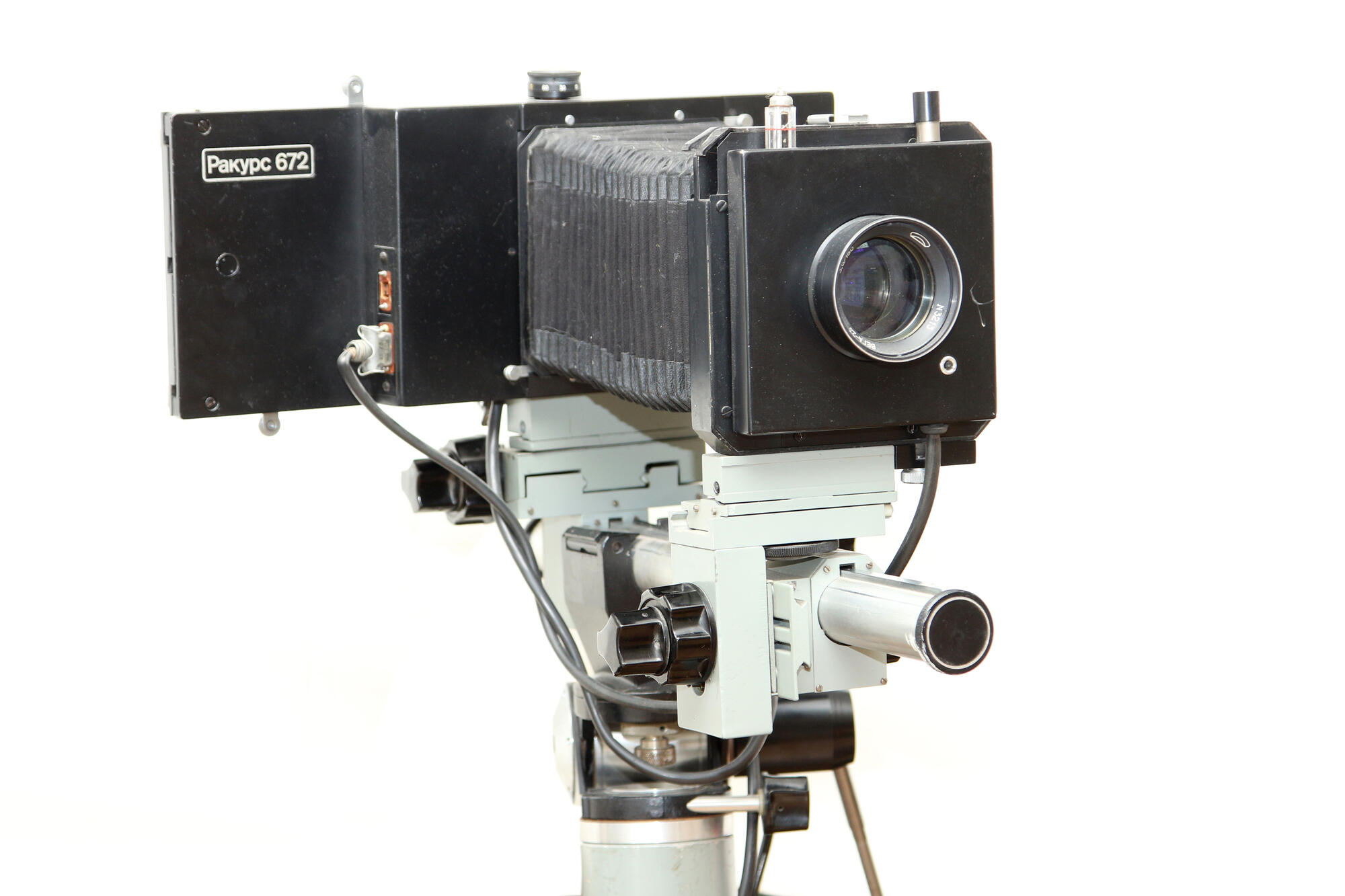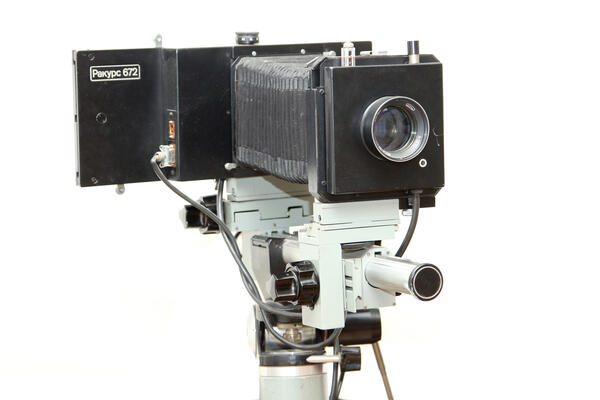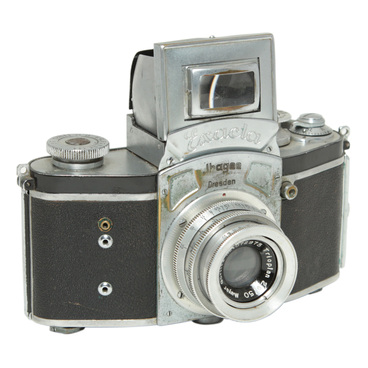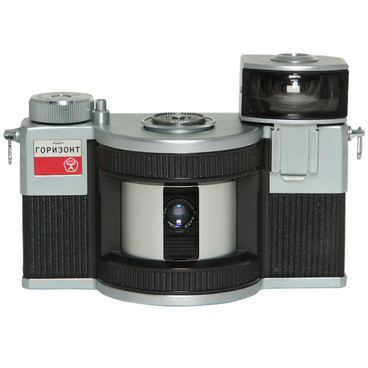From a foreign studio photographer’s point of view, Rakurs-672 and his older brother Rakurs-670 were the only professional cameras produced in the USSR. Only monorail cameras were considered suitable for high-quality studio shooting.
Rakurs-672
Время создания
1980
Место создания
Byelorussian SSR, Vileika
Размер
30 x 35 cm
Техника
Photographic equipment
Коллекция
0
Открыть в приложении#1
BelOMO
Rakurs-672
#2
#3
Their design gave unlimited freedom of movement of both boards that make up any camera: objective and negative. Only in film cameras we are used to, and now digital cameras of a rigid construction, these boards have become the front and back walls of an opaque camera.
#4
In “Rakurs” the role of the camera was played by bellows borrowed from the Russian accordion by Levitsky, a photographer. The boards’ movementsconnected by elastic fur made it possible to compensate any perspective distortions or, if necessary, create them on purpose.
#5
‘Rakurs-672’, like any direct-view camera, did not have a viewfinder, instead of which the photographer usedground glass slid into place of the cassette with a special slide. The first two digits in the camera’s title indicated the 6×7cmformat of the negative, the most fashionable in those years. It was called the “ideal format” because it best fit into most exhibition sizes of photographic paper. Well, the 672nd model could shoot four people in turn on the same framesaving time and photographic material when shooting for IDs.
#6
Russian Museum of Photography
читать дальшескрыть
00:00
00:00
1x
Rakurs-672
Время создания
1980
Место создания
Byelorussian SSR, Vileika
Размер
30 x 35 cm
Техника
Photographic equipment
Коллекция
0
Открыть в приложении
Поделиться



